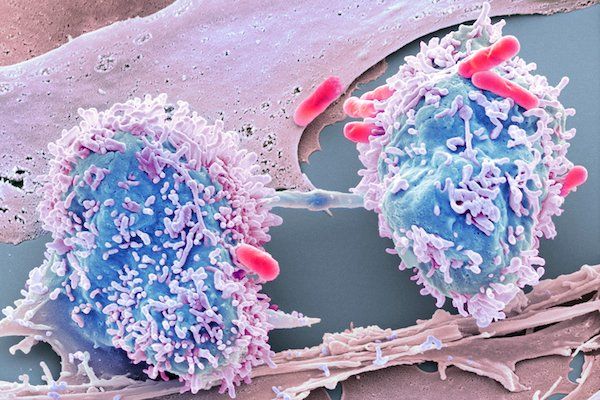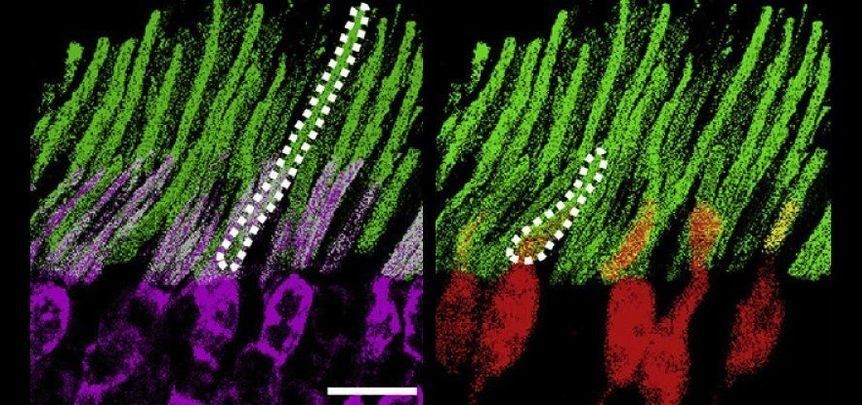Page 8138
Mar 1, 2019
Antarctic blackfin icefish genome reveals adaptations to extreme environments
Posted by Paul Battista in category: biotech/medical
Icefishes (suborder Notothenioidei; family Channichthyidae) are the only vertebrates that lack functional haemoglobin genes and red blood cells. Here, we report a high-quality genome assembly and linkage map for the Antarctic blackfin icefish Chaenocephalus aceratus, highlighting evolved genomic features for its unique physiology. Phylogenomic analysis revealed that Antarctic fish of the teleost suborder Notothenioidei, including icefishes, diverged from the stickleback lineage about 77 million years ago and subsequently evolved cold-adapted phenotypes as the Southern Ocean cooled to sub-zero temperatures. Our results show that genes involved in protection from ice damage, including genes encoding antifreeze glycoprotein and zona pellucida proteins, are highly expanded in the icefish genome. Furthermore, genes that encode enzymes that help to control cellular redox state, including members of the sod3 and nqo1 gene families, are expanded, probably as evolutionary adaptations to the relatively high concentration of oxygen dissolved in cold Antarctic waters. In contrast, some crucial regulators of circadian homeostasis (cry and per genes) are absent from the icefish genome, suggesting compromised control of biological rhythms in the polar light environment. The availability of the icefish genome sequence will accelerate our understanding of adaptation to extreme Antarctic environments.
Mar 1, 2019
Astronomers Predict Planet Nine Has 5x the Earth’s Mass
Posted by Michael Lance in category: space
They’re optimistic we’ll have an image of Planet Nine within 10 years.
They’re unraveling some of the mystery surrounding Pluto’s…
Mar 1, 2019
Laser Scans Uncover Hidden Military Traverse Underneath Alcatraz
Posted by Genevieve Klien in category: military

Alcatraz holds many forgotten secrets, but one has been discovered: High-tech radar and laser scans have uncovered a hidden military traverse underneath the infamous penitentiary, according to new research.
A team of researchers from Binghamton University, State University of New York used terrestrial laser scans, ground-penetrating radar data, and georectifications (the process of taking old digitized maps and linking them to a coordinate system so that they can be accurately geolocated in 3D space) to locate and assess the historical remains beneath the former recreation yard of the Alcatraz penitentiary, according to a press release.
Continue reading “Laser Scans Uncover Hidden Military Traverse Underneath Alcatraz” »
Mar 1, 2019
A New Idea about How Cancer Begins
Posted by Genevieve Klien in category: biotech/medical
It appears to happen more readily than we once believed.
- By Miguel Coelho on March 1, 2019
Mar 1, 2019
Department of Energy moves forward with controversial test reactor
Posted by Genevieve Klien in category: futurism
Mar 1, 2019
NASA finds China and India made the world greener than 20 years ago
Posted by Michael Lance in category: space
Mar 1, 2019
The Brain That Remade Itself
Posted by Genevieve Klien in categories: biotech/medical, neuroscience
Doctors removed one-sixth of this child’s brain — and what was left did something incredible.
Mar 1, 2019
A 30-million page library is heading to the moon to help preserve human civilization
Posted by Michael Lance in category: space travel
Mar 1, 2019
Scientists Just Took a Major Step Towards Injecting Eyes With Night Vision
Posted by Shane Hinshaw in categories: nanotechnology, particle physics
How badly do we want this?
An incredible new nanotechnology could one day enable us to see in the dark. It works on mice, and there’s little to say it wouldn’t be equally effective on other mammals. The only drawback — how are you with needles to the eyeball?
Research led by the University of Science and Technology of China produced particles that adhere to light-detecting cells in the retina and help them respond to near-infrared (NIR) wavelengths.
Continue reading “Scientists Just Took a Major Step Towards Injecting Eyes With Night Vision” »

















